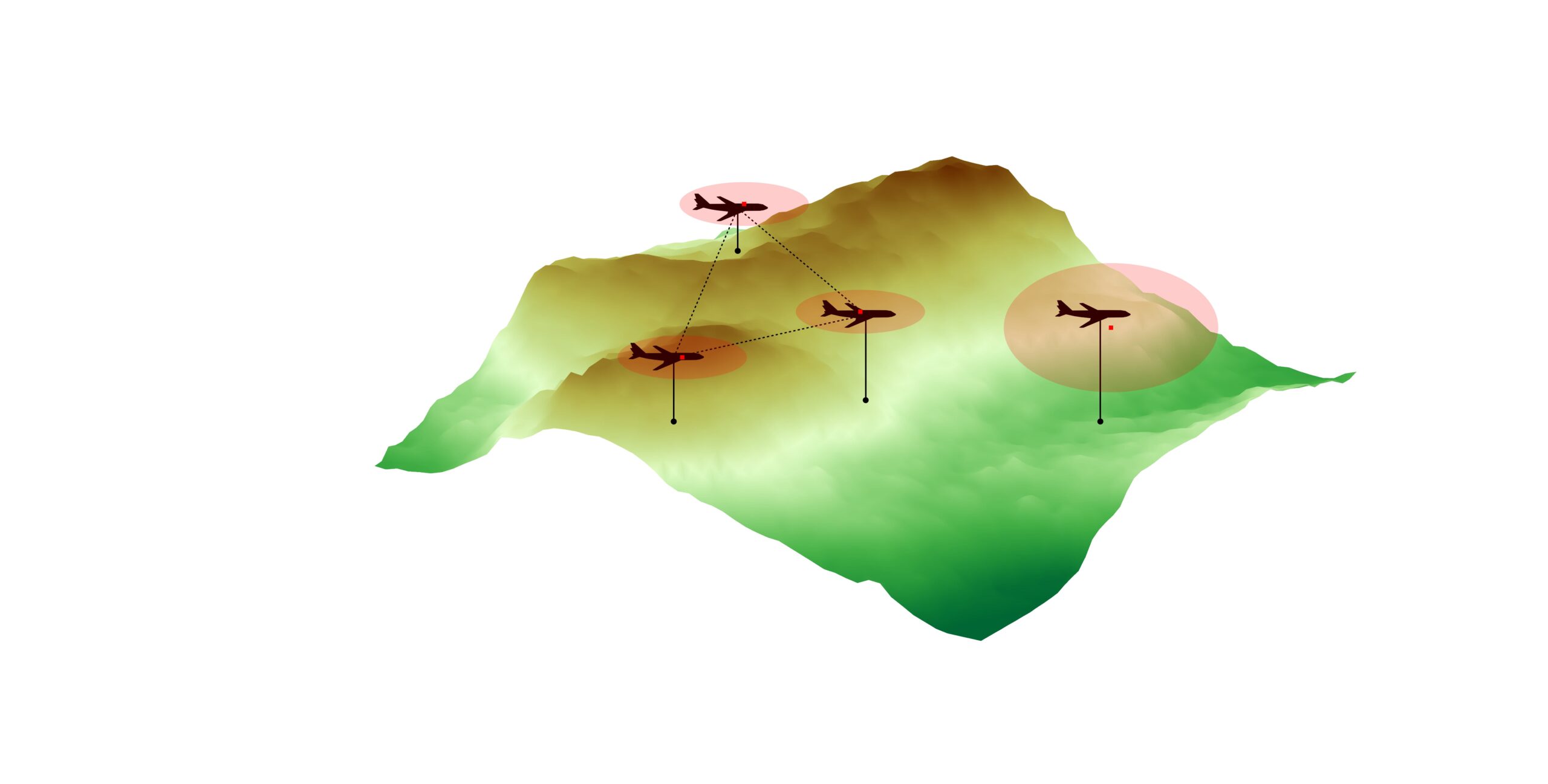Collaborative Localization in GNSS Denied Environments

Modern society relies heavily on GNSS for precise localization and timing. However, recent events have shown that GNSS is susceptible to jamming and spoofing, highlighting the need for alternative solutions. One promising approach is terrain-based localization, using visible landmarks, elevation maps, or Earth’s magnetic field irregularities – similar to techniques used by explorers long before GNSS.
While terrain-aided navigation is not new, it typically requires a high-quality inertial navigation system. This project explores how similar techniques can be used to localize a swarm or group of collaborating agents. By leveraging the geographical spread of the agents, a dynamic sensor array can be created, reducing the stringent requirements on the inertial system. This approach offers new opportunities but relies on well-known relative positions of individual agents, raising questions about the quality of relative positioning within the group.
Contact

Eric Sevonius
Industrial PhD student
Linköping University

Gustaf Hendeby
Associate Professor
Linköping University
